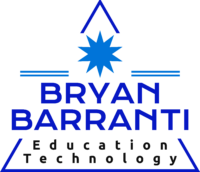The Challenges of Narrowing My Project Focus
As I work through the complexities of my Master of Education project, I’ve found narrowing the focus both exciting and challenging. My goal is to create an inclusive, technology-enhanced middle school woodwork classroom that supports all students, particularly ELL. At the heart of this project is exploring how UDL, supported by SAMR and TPACK, can create flexible and accessible learning opportunities for a diverse group of students.
I’ve framed my research around the question: How can technology support inclusion in the middle school woodwork classroom, specifically addressing the diverse needs of students regarding language, learning pace, and accessibility? This question reflects my personal commitment to making every student feel empowered to succeed, no matter their starting point.
One of my biggest struggles has been finding research that directly connects UDL, ELL learners, and technology integration in a way that applies to hands-on, technical subjects like woodworking. While there’s plenty of literature on UDL’s impact and the value of technology in education, the intersection with ELL support in this context often feels underexplored. I’ve spent hours refining search terms like “UDL” AND “ELL” AND “technology integration” to find relevant studies, but much of what I’ve learned has come from reflecting on my own teaching experiences and piecing together research from adjacent areas.
Integrating SAMR and TPACK into this framework has been another layer of complexity, but it’s also exciting. SAMR helps me evaluate how technology can redefine learning in my classroom, while TPACK reminds me to keep pedagogy and content at the forefront when introducing new tools. For example, using Google Classroom, CAD software, or interactive digital assessments has opened doors for ELL students to engage with woodworking projects in ways that align with their learning needs.
As I navigate these frameworks, I keep asking myself how to balance theory and practice. I want the tools I create — digital project plans, interactive tests, and multilingual resources — to be grounded in research but also immediately practical for my classroom. This isn’t just about meeting academic goals; it’s about creating a space where every student, no matter their background, feels supported and capable.
Even though it’s been a challenge to refine my focus and connect these frameworks, I feel confident this work will pay off. Each struggle pushes me to think more deeply about what inclusion really means and how I can use technology to foster an environment where all students, especially ELL learners, can thrive.
